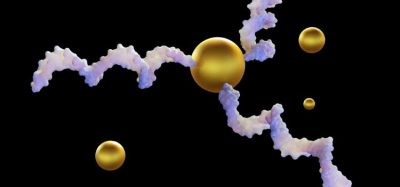X-ray imaging enables automated parenteral product particulate inspection
Posted: 25 October 2021 | Hannah Balfour (European Pharmaceutical Review) | No comments yet
X-ray imaging was able to detect all common particulates in lyophilised drug product and provide information of the cake structure in a new study.


Researchers have shown that not only could X-ray imaging allow for the automated detection of particulate matter in lyophilised parenteral products but also be used to predict critical quality attributes (CQAs) of the drug product.
Parenteral drug products are gaining importance with the rise of biopharmaceuticals, but while they are typically administered in the liquid form, for transport and storage they are typically lyophilised (freeze-dried) into a solid powder form called a “cake” to enhance stability and shelf life. Particulates within parenteral products are a major concern for patient safety, and one of the primary reason such products.
There are two types of particulates:
- intrinsic, such as steel, glass, lyo stopper or polymer particulates from the wear and abrasion of machinery, glass containers and lyo stoppers, these are sterile;
- extrinsic, eg, hair, textile fibres and insects, introduced from outside the process, these are not sterile and may be toxic or infective to patients.
To prevent harm due to particulates, current guidelines include the manual visual inspection of every container by specially trained operators. This method is not only time-consuming, cost-intensive and prone to human error, but is also limited to clear solutions, the surface of lyophilised products and cannot be applied to opaque containers, according to experts. While semi-automated and automated inspection machines based on multiple imaging systems are available, experts say that they are limited to particles within the visible size range (50–100μm) that are located close to the surface of the cake. To ensure safety, methods are needed that can investigate the complete cake.
In a new paper published in the International Journal of Pharmaceutics: X, Sacher et al. assessed whether X-ray imaging could be used to detect particulate matter such as in a pharmaceutical lyophilised product. X-ray was chosen because, according to the authors, its penetration depth, fast acquisition rate and high resolution make it “the most promising technology for the detection of particulate matter within the full volume of a container”.
![X-ray images of vials with different classes of particulates. Particles of 80–100 μm steel, 80–100 μm glass, 160–250 μm stopper, 160–250 μm PTFE, 160–250 μm PE and 120 m nylon string [Credit: Sacher et al.].](https://www.europeanpharmaceuticalreview.com/wp-content/uploads/X-ray-imaging-lyophilised-drug-product-375x250.jpg)
![X-ray images of vials with different classes of particulates. Particles of 80–100 μm steel, 80–100 μm glass, 160–250 μm stopper, 160–250 μm PTFE, 160–250 μm PE and 120 m nylon string [Credit: Sacher et al.].](https://www.europeanpharmaceuticalreview.com/wp-content/uploads/X-ray-imaging-lyophilised-drug-product-375x250.jpg)
X-ray images of vials with different classes of particulates. Particles of 80–100 μm steel, 80–100 μm glass, 160–250 μm stopper, 160–250 μm PTFE, 160–250 μm PE and 120 m nylon string [Credit: Sacher et al., Figure 5].
In the study they spiked vials with the most common types of particulates (steel, glass, lyo stopper, polymers and different sized organics) to see if an X-ray imaging setup optimised for contrast enhancement could detect them. Contrast enhancement was enables by the identification of the best settings for voltage, exposure time and magnification, and the application of image processing, all detailed within the paper.
They found that steel and glass- particulates could be in sizes as small as 80-100μm, the detection limit for conventional visual inspection, but stoppers and other polymers were identified only in bigger size classes. Organic particulates with diameters of 80–100μm such as hair and nylon strings could also be detected. The authors also reported that with their applied exposure time, 900 vials per hour can be inspected in a single line.
Sacher et al. cautioned however, that their technique was limited by low contrast for all organic substances and struggled to detect glass particles of a similar size to the surrounding cake structure. To combat this, the authors said the next step would be to develop sophisticated algorithms based on machine learning methods that would enable the automated impurity detection of even small organic matter.
An unintended discovery was that X-ray imaging could also confer information about the structure of the drug product cake. Thus, the authors stated that X-ray imaging could enable the fast and accurate analysis of the lyophilised cake and investigations of the relationship between cake attributes and the CQAs of a drug product, such as reconstitution time.
They concluded that their paper clearly shows that X-ray imaging paves the way “for automated image-based particulate matter detection”.
Related topics
Analytical techniques, Biologics, Drug Safety, Lyophilisation, QA/QC









